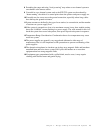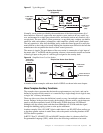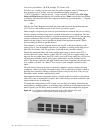
Chapter 4 - Introduction to Matrix Intercom Systems 51
and switching systems much earlier, and now it would be applied to matrix intercom
systems.
In a TDM matrix, the incoming signals from users (microphones or headsets) are run
through an A/D converter and assigned a “time slot” on a TDM backplane. A good
(although not strictly accurate) analogy would be the signals on a cable TV system.
Whereas on the cable system you might have ESPN, HBO, and MTV, on a TDM
backplane you would have the timeslots for Director, Producer, and Camera1. A user can
then listen (or be talked to by) any or all of the timeslots. Determining which signal is
heard is under software control, and can (generally) be selected by the listener, or pre-
programmed. It can also be a function in which other users are calling the listener at that
moment.
Figure 4.5
An example of how multiple signals are “time-sliced” for use in a TDM system.
Again, if you use the cable TV analogy, it is easy to understand why the systems do not
have to obey the square law. In a conventional square law matrix, adding a single user to a
100-user matrix requires the addition of 201 crosspoints (101
2
-100
2
). In the TDM world, it
requires the addition of two simple bits – a “transmitter” for the already existent time slot,
and a receiver to tune in the other time slots for that user to hear.


















